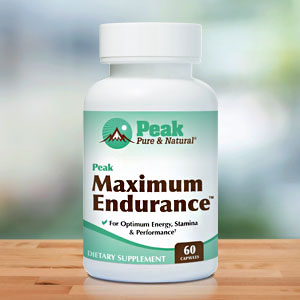Get Easy Health Digest™ in your inbox and don’t miss a thing when you subscribe today. Plus, get the free bonus report, Mother Nature’s Tips, Tricks and Remedies for Cholesterol, Blood Pressure & Blood Sugar as my way of saying welcome to the community!
How a fat-burning hormone could keep Alzheimer’s away

Alzheimer’s is a devastating disease for which there still isn’t a safe and effective drug treatment option, even after years of research.
The latest drug hopefuls — Leqembi® (lecanemab), which I wrote about here, and Aduhelm® (Aducanumab) — seem quite risky, so don’t be fooled by the FDA approval…
In phase 3 clinical trials patients getting Leqembi experienced a 27 percent slower rate of decline, but according to Dr. Alberto Espay, a neurologist at the University of Cincinnati College of Medicine, that percentage falls below the threshold of what would be “noticeable” to a patient.
But worse, some patients developed brain swelling and some experienced brain bleeds (17%!). Dr. Espay, who petitioned against FDA approval, says those risks are far higher than any actual improvement the drug can offer. Unfortunately, those risks were similar for patients on Aduhelm.
Wouldn’t it be nice to have another way to slow this disease, one that’s effective, well-tolerated, natural — and much less likely to cause a brain bleed?
Well, there is…
Exercise helps Alzheimer’s — but why?
A 2018 study published in the Journal of the American Geriatrics Society showed that exercise, particularly aerobic exercise, may delay the decline in cognitive function seen in individuals who are at risk of or who have Alzheimer’s (AD).
And research has also shown that physical exercise can reduce amyloid beta deposits in various mouse models of AD, but the mechanisms involved have remained unknown, until now…
The secret is irisin — a muscle-derived hormone that increases in the body when we exercise. Irisin regulates glucose and lipid metabolism in fat tissue. It also increases energy expenditure by browning white fat tissue. In fact, irisin is a powerful fat-burning hormone.
Now research has seen that increasing irisin levels in the brain can trigger a brain chemistry cascade capable of destroying β-amyloid — the main component of AD’s signature plaque.
An amyloid-destroyer in the brain
Previous research has revealed that levels of irisin are very low in the brains of patients with AD and in mouse models as well.
So the starting point for a research team led by Massachusetts General Hospital (MGH) was to discover if irisin-based therapies might be an inexpensive and well-tolerated therapy in the fight against AD.
First, they had to determine if irisin did indeed play a causal role in the link between exercise and reduced amyloid beta.
To do that Dr. Se Hoon Choi and Dr. Eun Hee Kim of the Genetics and Aging Research Unit at MGH applied the hormone to a 3D cell culture model of AD. And it paid off: the irisin treatment led to a “remarkable” reduction of amyloid beta pathology.
More importantly, though, they discovered why…
Irisin was causing an increase in the activity of neprilysin, an enzyme that degrades amyloid beta, which had already been found to be elevated in the brains of mice with AD that were exposed to exercise.
Then they saw how…
The researchers discovered that irisin ramped up neprilysin activity by binding to a receptor on astrocytes (very important brain cells) to get them to release the enzyme. And, by binding to this receptor, irisin reduced the signaling capabilities of 2 key proteins — it was this action that proved critical for irisin to enhance the activity of neprilysin.
A potential new treatment for Alzheimer’s
Previous studies have shown that in mice, irisin injected into the bloodstream can make its way into the brain, making it potentially useful as a therapeutic.
“Our findings indicate that irisin is a major mediator of exercise-induced increases in neprilysin levels leading to reduced amyloid beta burden, suggesting a new target pathway for therapies aimed at the prevention and treatment of Alzheimer’s disease,” says Dr. Rudolph Tanzi, director of the Genetics and Aging Research Unit.
Will doctors be prescribing exercise regimens for Alzheimer’s instead of questionable drugs?
And why wait until they do?
The World Health Organization recommends that people over 65 get 150 minutes of moderate-intensity aerobic exercise or 75 minutes of vigorous-intensity aerobic exercise per week to protect themselves from Alzheimer’s.
Editor’s note: While you’re doing all the right things to protect your brain as you age, make sure you don’t make the mistake 38 million Americans do every day — by taking a drug that robs them of an essential brain nutrient! Click here to discover the truth about the Cholesterol Super-Brain!
Sources:
Exercise-induced hormone irisin may reduce Alzheimer’s disease plaque and tangle pathology in the brain Science Daily
Can Exercise Improve Cognitive Symptoms of Alzheimer’s Disease? Journal of the American Geriatrics Society
Physical activity World Health Organization
FDA grants full approval to new Alzheimer’s drug meant to slow disease — NBC news














